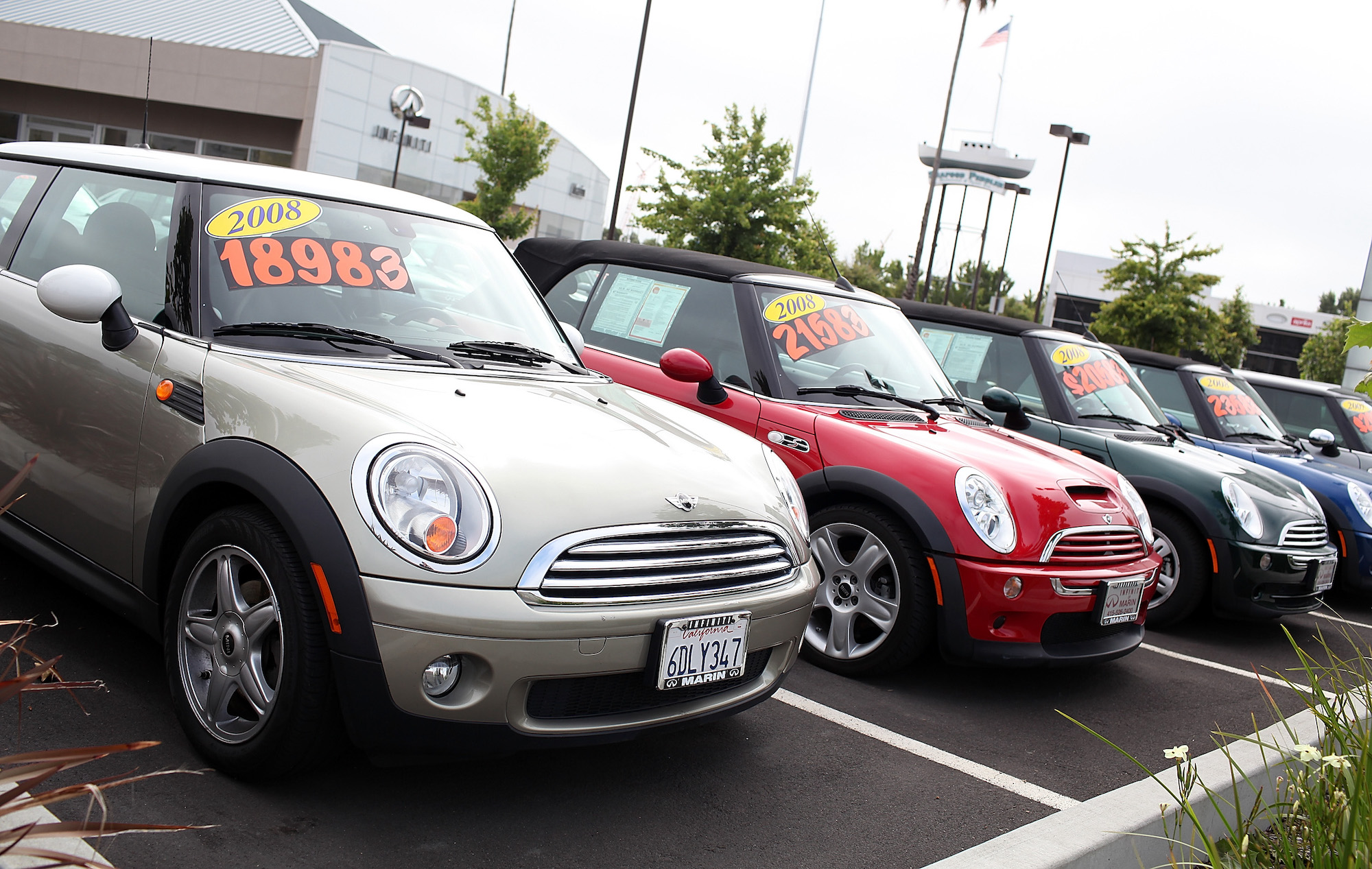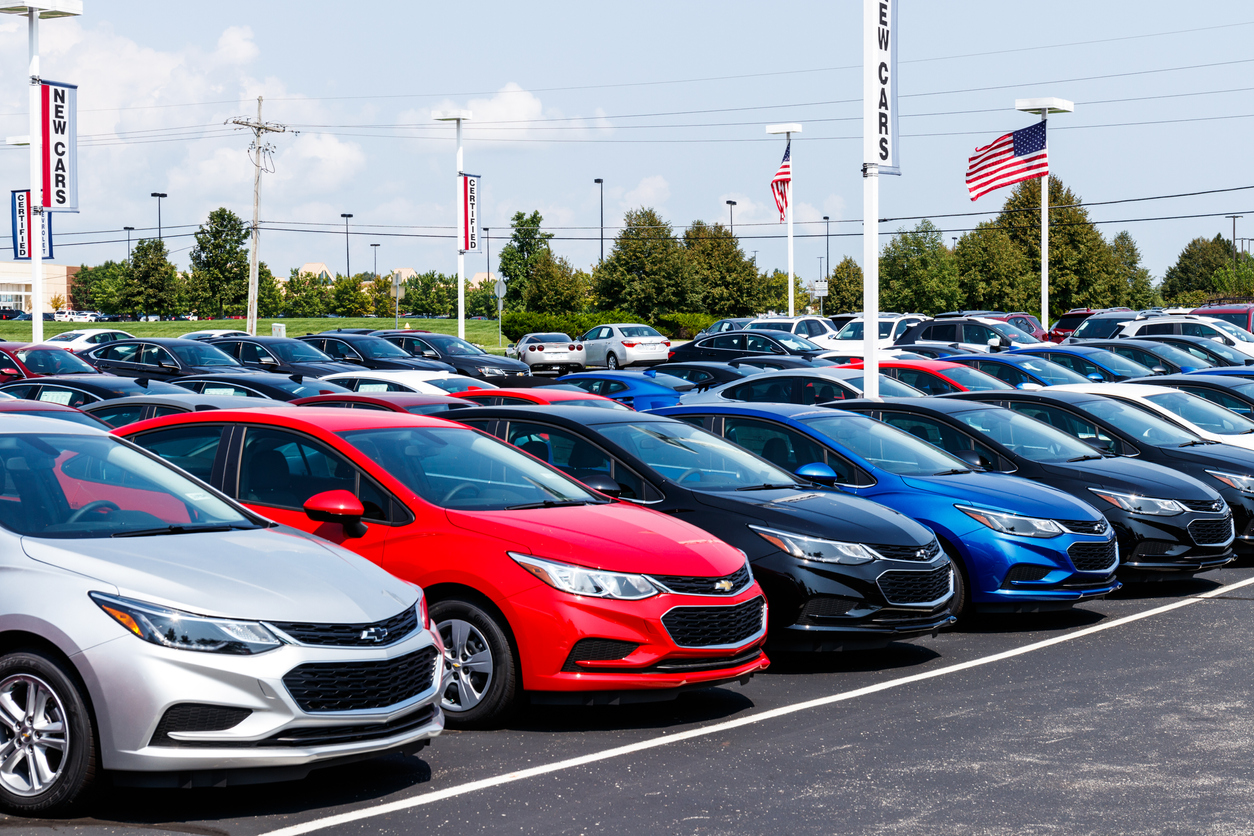Used Stake Bed Trucks For Sale: Your Comprehensive Guide to Finding the Perfect Workhorse pickup.truckstrend.com
In the world of commercial vehicles, few designs offer the raw versatility and practical utility of a stake bed truck. Characterized by a flat, open bed with removable vertical stakes or panels, these workhorses are a common sight across industries, from landscaping and construction to agriculture and urban delivery. Their ability to easily load and unload diverse cargo, coupled with the option to secure items with the stakes or remove them for oversized loads, makes them indispensable for many businesses and individuals.
While a brand-new stake bed truck offers the latest features and a pristine warranty, the savvy buyer often turns to the used market. Buying a pre-owned stake bed truck can unlock significant cost savings, immediate availability, and access to a wider range of models and configurations that might no longer be in production. This comprehensive guide aims to equip you with the knowledge and insights needed to navigate the used stake bed truck market, ensuring you make an informed and valuable purchase.
Used Stake Bed Trucks For Sale: Your Comprehensive Guide to Finding the Perfect Workhorse
What is a Stake Bed Truck? Unpacking the Design and Functionality
At its core, a stake bed truck is a type of flatbed truck equipped with a series of upright, removable stakes (often made of wood, steel, or aluminum) that fit into pockets along the perimeter of the bed. These stakes effectively create a temporary, customizable wall around the cargo area.
The genius of the stake bed design lies in its adaptability:
- Open Flatbed: With the stakes removed, the truck functions as a pure flatbed, ideal for transporting wide, long, or irregularly shaped items that wouldn’t fit in a traditional box truck or pickup bed. This makes it perfect for lumber, piping, sheet goods, or large machinery.
- Contained Cargo Area: When the stakes are in place, they provide a secure perimeter to contain loose materials like gravel, mulch, bagged goods, or equipment. They prevent items from sliding off during transport, offering a safer and more organized solution than merely strapping down everything on an open flatbed.
- Easy Loading/Unloading: The low deck height (compared to a box truck) and open sides allow for convenient loading and unloading from any angle, whether by hand, forklift, or crane.

Common applications for stake bed trucks include:
- Landscaping: Hauling mulch, soil, trees, shrubs, and bagged goods.
- Construction: Transporting tools, materials, debris, and smaller equipment.
- Agriculture: Moving feed, hay bales, produce, and farm implements.
- Delivery Services: Ideal for furniture, appliances, or palletized goods that require easy access.
- Moving Companies: Offering flexibility for various household items.

Understanding this fundamental design and its versatile applications is the first step in appreciating why a used stake bed truck might be the perfect addition to your fleet or personal equipment.

Why Buy Used? The Advantages of Pre-Owned Stake Beds
Opting for a used stake bed truck over a new one offers a compelling array of benefits that often outweigh the perceived risks:
- Significant Cost Savings: The most obvious advantage. Like all vehicles, trucks experience substantial depreciation, especially in their first few years. Buying used means the previous owner has absorbed this initial depreciation hit, allowing you to acquire a capable vehicle at a fraction of the new price.
- Immediate Availability: Unlike ordering a new truck with specific configurations, which can involve long lead times, used trucks are typically available for immediate purchase and deployment. This is crucial for businesses needing to expand their capacity quickly.
- Proven Reliability: Many used models have well-documented histories of durability and performance. Researching specific makes and models can reveal those known for their longevity, giving you confidence in your purchase.
- Wider Selection: The used market offers a vast inventory of trucks from different model years, manufacturers, and with various body configurations. This broad selection increases your chances of finding a truck that perfectly matches your specific needs and budget, including older models renowned for their robust build quality.
- Reduced Insurance Costs: Generally, older and less expensive vehicles cost less to insure, potentially lowering your operational overhead.
- Lower Registration Fees: In many regions, vehicle registration fees are tied to the vehicle’s age and value, meaning a used truck will likely incur lower annual costs.
Key Considerations When Buying a Used Stake Bed Truck
While the benefits are clear, purchasing a used stake bed truck requires careful consideration and a thorough inspection process. Here are the critical areas to focus on:
- Condition of the Bed and Stakes: This is paramount. Inspect the flatbed for rust, warping, dents, or cracks. Check the integrity of the stake pockets – are they damaged, rusted, or loose? Examine the stakes themselves for rot (if wood), bends, or significant corrosion (if metal). Ensure they fit snugly and securely.
- Chassis and Frame Integrity: Get underneath the truck (safely!) and inspect the frame for rust, especially deep, flaky rust that indicates structural compromise. Look for any signs of welding repairs that might suggest previous damage.
- Engine and Transmission Performance:
- Mileage: High mileage isn’t always a deal-breaker if maintenance was consistent.
- Maintenance Records: Request all available service history.
- Fluid Leaks: Check for oil, coolant, or transmission fluid leaks.
- Cold Start: Listen for unusual noises (knocking, grinding, excessive smoke).
- Test Drive: Assess acceleration, braking, shifting smoothness (automatic), clutch feel (manual), and any warning lights.
- Tires and Brakes: Examine tire tread depth and check for uneven wear, which could indicate alignment issues. Inspect brake pads, rotors/drums, and lines for wear or leaks.
- Suspension System: Look for sagging, broken leaf springs, or leaking shock absorbers. Bounce each corner of the truck to test shock effectiveness.
- Electrical System: Test all lights (headlights, tail lights, turn signals, brake lights), gauges, horn, wipers, and the air conditioning/heating system. Check trailer wiring connections if applicable.
- Payload Capacity & GVWR: Ensure the truck’s Gross Vehicle Weight Rating (GVWR) and payload capacity meet or exceed your typical hauling requirements. Overloading a truck can lead to premature wear and safety hazards.
- Rust and Corrosion: Beyond the frame and bed, check door sills, wheel wells, cab corners, and battery trays. Surface rust is manageable; structural rust is a red flag.
- Title and Liens: Verify the truck’s title is clear and free of any liens. A Vehicle Identification Number (VIN) check can reveal accident history, odometer discrepancies, and previous ownership details.
Finding Your Ideal Used Stake Bed: Where to Look
The market for used commercial trucks is robust, offering several avenues to find your next stake bed:
- Online Marketplaces:
- Commercial Truck-Specific Sites: Websites like TruckPaper.com, CommercialTruckTrader.com, and MyLittleSalesman.com specialize in commercial vehicles, offering detailed listings and filters.
- General Classifieds: Craigslist, Facebook Marketplace, and eBay Motors can list trucks from private sellers and smaller dealers, often at competitive prices. Be cautious and verify sellers.
- Used Truck Dealerships: Reputable commercial truck dealerships often have a good selection of used stake beds. They typically offer inspected vehicles, potential warranties, and financing options, albeit at a slightly higher price point.
- Auctions: Government surplus auctions, fleet auctions, and private auto auctions can be sources of great deals, but they often require more expertise in vehicle assessment and come with "as-is" terms.
- Private Sellers: Buying directly from a business upgrading its fleet or an individual selling off an asset can sometimes yield excellent deals, as you cut out the middleman.
- Word of Mouth & Networking: Sometimes the best deals are found through industry contacts or local businesses.
The Inspection Process: A Step-by-Step Guide
Once you’ve identified a potential candidate, a systematic inspection is crucial:
- Initial Visual Walk-Around: Check for obvious damage, mismatched paint, and overall cleanliness.
- Exterior and Undercarriage:
- Inspect the frame for bends, cracks, or excessive rust.
- Check suspension components (leaf springs, shocks).
- Examine tires for wear and age (DOT date code).
- Look for fluid leaks under the truck.
- Engine Bay:
- Check fluid levels and condition (oil, coolant, brake fluid).
- Look for signs of leaks, frayed belts, or corroded battery terminals.
- Note any unusual smells.
- Request a cold start to listen for engine noises.
- Interior:
- Test all lights, gauges, wipers, horn, radio, and HVAC.
- Check seat condition, pedals, and steering wheel for excessive wear.
- Ensure all windows operate smoothly.
- Test Drive:
- Start the engine from cold.
- Listen for unusual noises during acceleration, braking, and turning.
- Test the brakes: ensure they are firm and the truck stops straight.
- Check steering for excessive play or pulling.
- Evaluate transmission shifts – should be smooth, without clunking or slipping.
- Drive at various speeds, including highway speeds if possible.
- Documentation Check:
- Verify the VIN on the truck matches the title.
- Review maintenance records thoroughly.
- Run a VIN check report (CarFax, AutoCheck) for accident history, odometer discrepancies, and title issues.
- Pre-Purchase Inspection (PPI): For serious contenders, invest in a PPI by an independent, qualified mechanic. They can spot issues you might miss and provide an objective assessment of the truck’s condition.
Maximizing Your Purchase: Tips for Used Stake Bed Buyers
- Define Your Needs Clearly: Before you start looking, know exactly what you need in terms of payload capacity, bed length, engine type (gas vs. diesel), transmission (manual vs. automatic), and any specific features.
- Set a Realistic Budget: Factor in not just the purchase price, but also potential immediate repairs, registration, insurance, and ongoing maintenance.
- Be Patient: The right truck might not appear immediately. Don’t rush into a purchase.
- Don’t Be Afraid to Negotiate: Most prices are negotiable, especially from private sellers. Do your research on market values for similar trucks.
- Get Everything in Writing: Ensure all agreements, including "as-is" clauses or any promised repairs, are documented.
- Factor in Post-Purchase Maintenance: Even a well-inspected used truck will likely need some initial maintenance (fluid changes, filter replacements) to get it ready for your operations.
Common Challenges and Solutions
- Hidden Problems: The biggest risk with used vehicles.
- Solution: Thorough inspection, comprehensive test drive, and strongly consider a pre-purchase inspection by a trusted mechanic.
- Lack of Maintenance History: Can make assessing long-term reliability difficult.
- Solution: Be more cautious, adjust your offer price downwards, or look for another truck with better records.
- Extensive Rust: Can compromise structural integrity.
- Solution: Distinguish between minor surface rust (cosmetic) and deep, flaky, structural rust (dangerous). Avoid trucks with significant frame or bed rust.
- Overpriced Units: Sellers may overestimate their truck’s value.
- Solution: Research market values for comparable trucks extensively. Be prepared to walk away if the price isn’t right.
Used Stake Bed Trucks For Sale: Estimated Price Ranges
Prices for used stake bed trucks vary dramatically based on make, model, year, mileage, condition, engine type, and geographical location. This table provides estimated ranges for common categories. These are rough guidelines and actual prices can fall outside these ranges.
| Truck Type/Size | Year Range | Condition | Typical Price Range (USD) | Key Factors Affecting Price |
|---|---|---|---|---|
| Light-Duty | 2005-2015 | Fair-Good | $8,000 – $20,000 | Ford F-250/F-350, Ram 2500/3500, Chevy Silverado 2500/3500. Gas vs. Diesel engine, 2WD vs. 4WD, mileage, body length, overall wear. Lower range for older/higher mileage. |
| (e.g., F-250/350) | 2016-Present | Good-Excellent | $20,000 – $45,000+ | Newer models, lower mileage, specific high-demand configurations. |
| Medium-Duty | 2000-2010 | Fair-Good | $15,000 – $35,000 | Ford F-450/F-550, Ram 4500/5500, GMC C4500/C5500, International Durastar. Diesel engines common. GVWR, hydraulic brakes, more commercial use. |
| (e.g., F-450/550, C4500) | 2011-Present | Good-Excellent | $35,000 – $75,000+ | Newer, lower mileage, advanced features, larger payload capacity. |
| Heavy-Duty | 1995-2005 | Fair-Good | $10,000 – $25,000 | Older Freightliner, International, Kenworth, Peterbilt. Air brakes. Condition of major components (engine, transmission), frame rust, hours on engine (if applicable). |
| (e.g., Freightliner M2) | 2006-Present | Good-Excellent | $25,000 – $90,000+ | Newer, lower mileage, specific heavy-duty applications (e.g., equipped for crane, lift gate), larger engines, higher GVWR. |
Note: Prices can fluctuate significantly based on market demand, economic conditions, and regional availability. Always conduct your own market research.
Frequently Asked Questions (FAQ)
Q1: What’s the typical lifespan of a used stake bed truck?
A1: With proper maintenance, many commercial trucks, including stake beds, can last well over 300,000 to 500,000 miles, and even more for heavy-duty diesels. The lifespan depends heavily on the initial quality, how it was used (heavy vs. light loads), and consistent maintenance.
Q2: Can I convert a regular flatbed to a stake bed?
A2: Yes, if the flatbed body is designed with stake pockets along its perimeter. Many flatbeds are built with these pockets, allowing you to purchase and insert stakes. If it doesn’t have pockets, it would require custom fabrication and welding, which can be costly.
Q3: What’s the difference between a stake bed and a dump truck?
A3: A stake bed has a fixed flat platform with removable sides, primarily for hauling and securing diverse cargo. A dump truck has a bed that can be hydraulically raised to dump loose materials (like sand, gravel, or dirt) out the back. While some dump trucks have short stake sides, their primary function is dumping, not general cargo transport.
Q4: Do I need a CDL to drive a stake bed truck?
A4: It depends on the truck’s Gross Vehicle Weight Rating (GVWR) or Gross Combined Weight Rating (GCWR) if you’re towing a trailer. In the U.S., a CDL is generally required for vehicles with a GVWR of 26,001 lbs or more, or if towing a trailer with a GVWR over 10,000 lbs where the GCWR is over 26,001 lbs. Most light-duty and many medium-duty stake beds do not require a CDL for personal or non-commercial use, but always check your local Department of Motor Vehicles (DMV) regulations.
Q5: How do I determine the right size stake bed for my needs?
A5: Consider the heaviest and largest items you typically haul. Look at the truck’s payload capacity (found on a sticker inside the door jamb) and the bed dimensions. Don’t just think about what you might carry, but what you will carry regularly to avoid overloading or underutilizing the truck.
Q6: Are parts readily available for older models?
A6: For common makes and models (e.g., Ford F-Series, Chevy/GMC, Ram), parts availability is generally good, even for older trucks, as many components are standardized or widely produced. Less common or very old models might require more specialized sourcing, but the aftermarket and used parts markets are extensive.
Conclusion
A used stake bed truck represents an excellent investment for anyone needing a versatile, reliable, and cost-effective hauling solution. By choosing pre-owned, you unlock significant financial advantages without sacrificing functionality. However, the key to a successful purchase lies in thorough research, a meticulous inspection process, and understanding the specific needs of your operation.
Remember to prioritize the condition of the bed and frame, assess the mechanical health of the engine and transmission, and always verify the truck’s history. With the right approach, a used stake bed truck can be a workhorse that serves your business or personal needs faithfully for years to come, proving itself to be a truly valuable asset.